|
|
|
|
|
|
|
|
November 3, 2022 | ISSUE 50 |
|
|
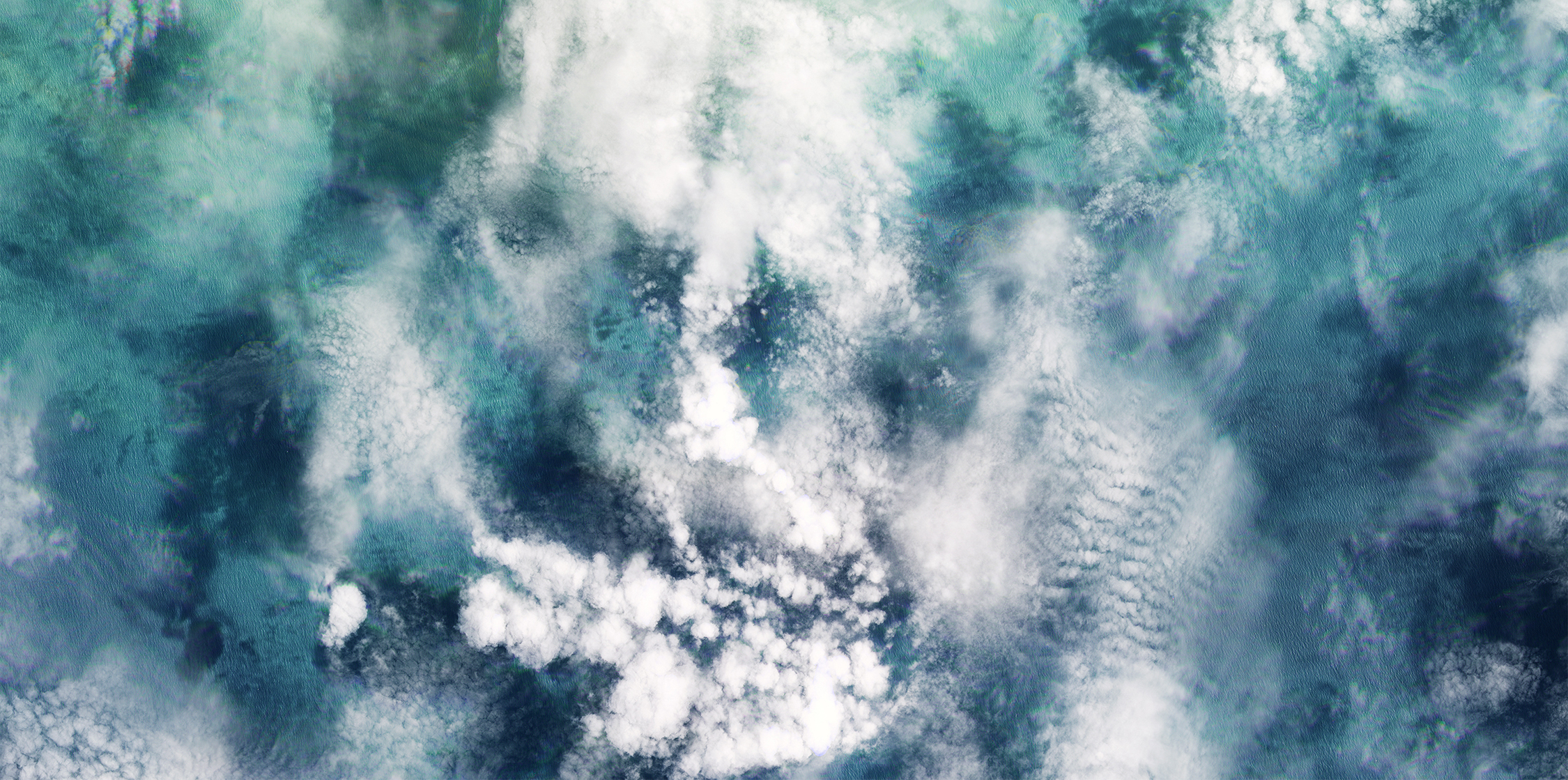 |
PlanetScope • Bathurst Island, Australia • March 1, 2022 |
In this week’s issue: We take a look at the beauty of—and complicated relationship with—viewing clouds from satellites; a mountain peak casts a shadow in Chile; and Snapshots turns 1. |
|
|
|
|
FEATURED STORYClouds
We haven’t been honest with you. Our goal here is to bring you realistic looking images of Earth that are striking, intriguing, and easily understood. But in order to do that we editorialize, leave out certain details, and cherry pick scenes. In other words, we’re not showing you the whole truth. We can’t help it, though. We have a photobombing problem.
Between our satellites in orbit and the solid planet below is a layer of water as vital to Earth’s surface as it can be frustrating to those studying it. At any given moment around 67% of the planet is covered by clouds; a blessing for meteorologists, but a nuisance for the rest of us concerned with the surface. Our engineers don’t look up to see animals and faces in the clouds, they look down and see missed opportunities.
|
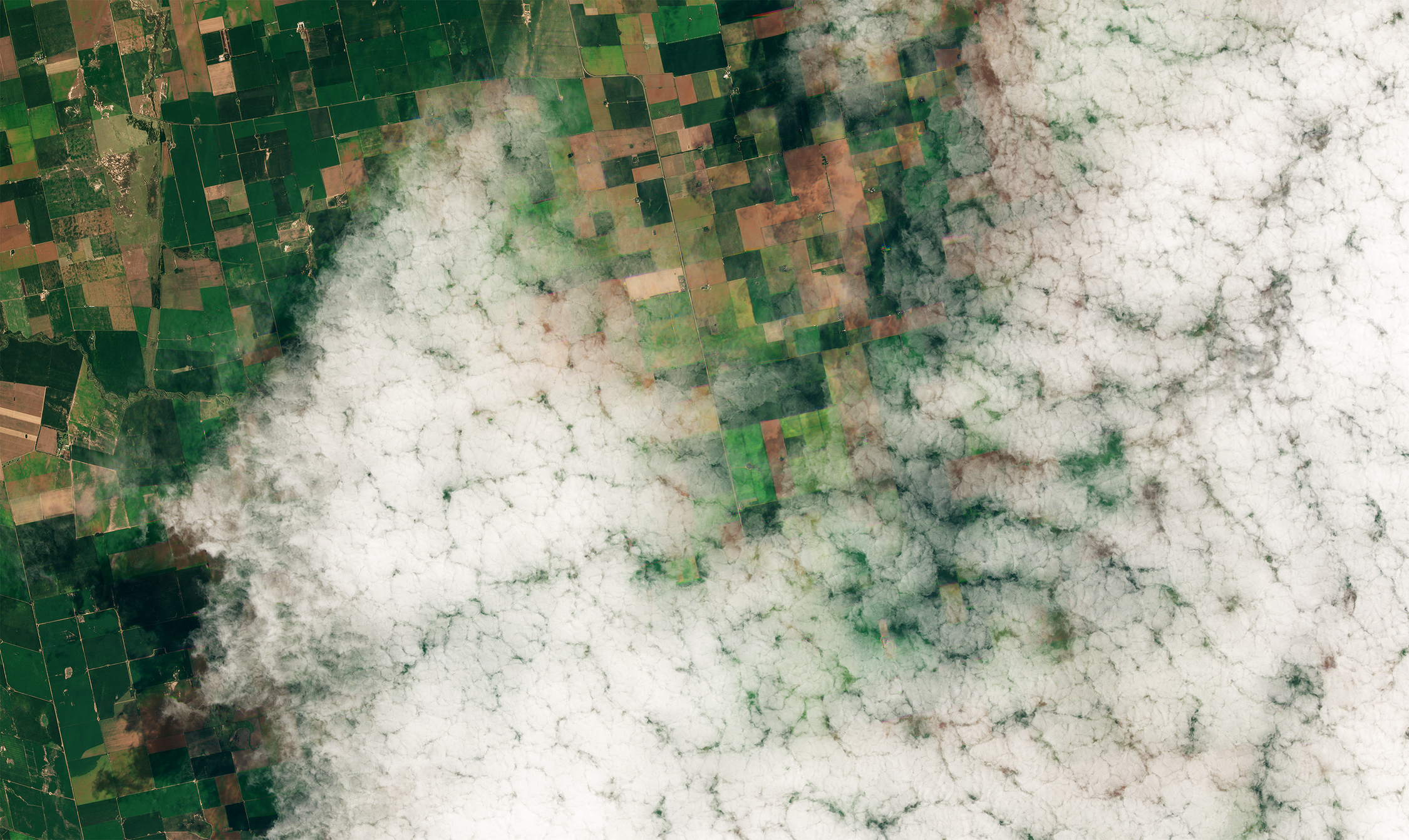 |
PlanetScope • Rio Cuarto, Argentina • March 25, 2022 |
This brings us back to our dishonesty. Maybe while viewing our images you’ve said aloud, like an eager farmer staring at the horizon, “where are the clouds?” The answer is they’re there, we’re just working around them. We almost always select for unobstructed, cloud-free images. They’re easier to view and far more practical for our purposes. |
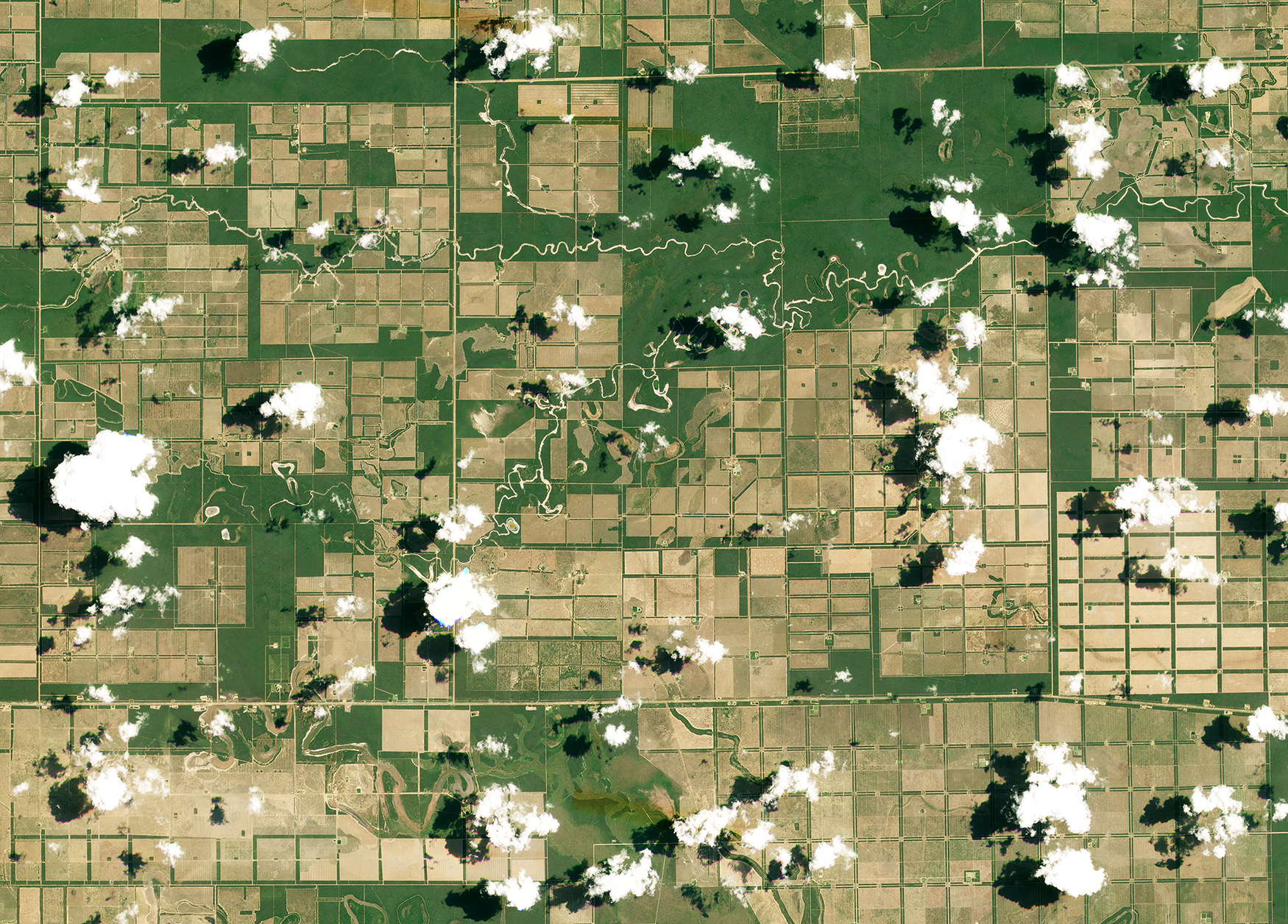 |
PlanetScope • Paraguay • October 26, 2022 |
‘Cloud-free’ is a phrase thrown around Planet’s office with the same reverence as ‘lunch is here.’ But the truth of the matter is that many of our cloud-full images are captivating in their own right, even if they’re not useful for the problems we’re solving. So lay back and cloud gaze with us as we share a small set of our favorite cloudy images. |
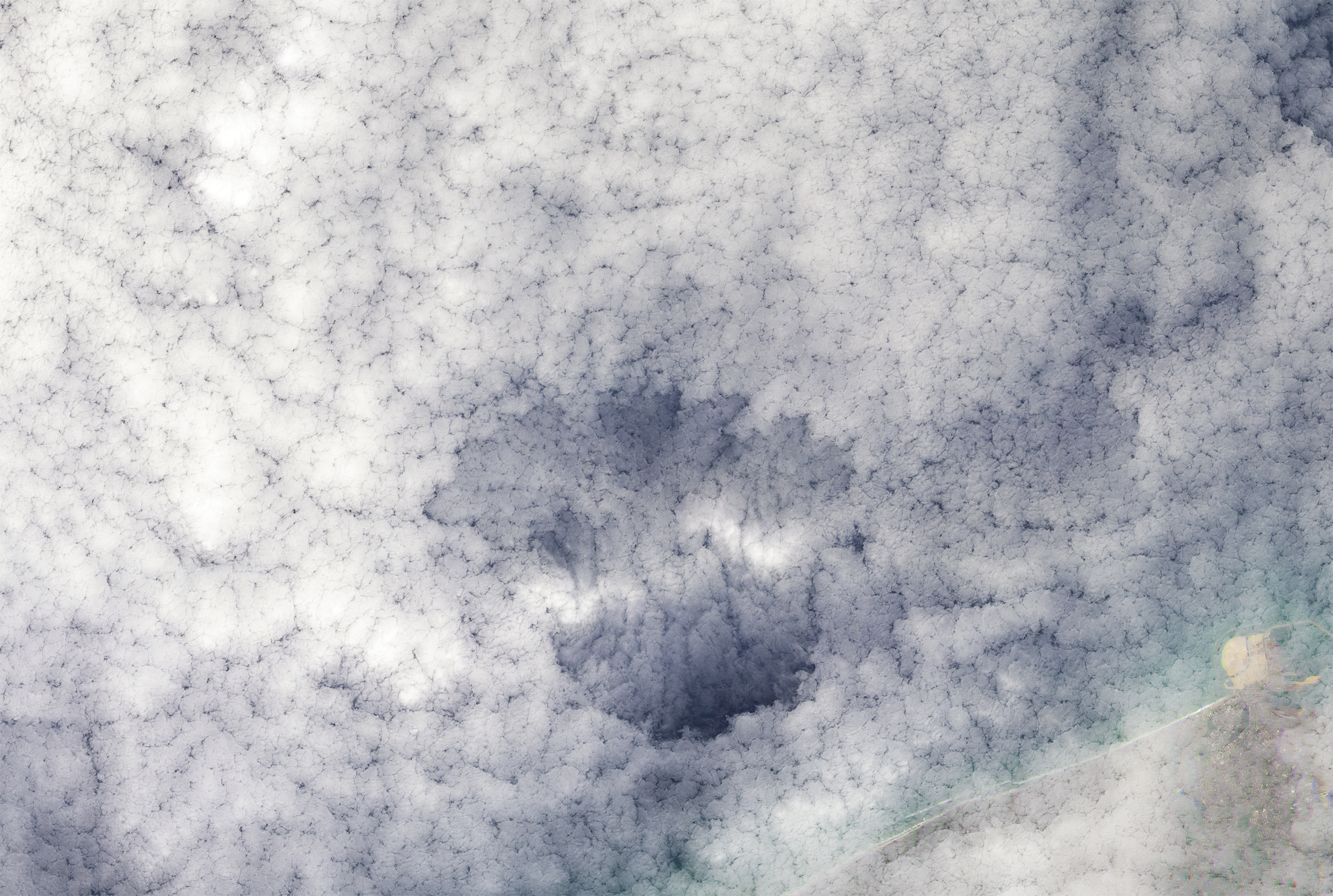 |
PlanetScope • Colombo, Sri Lanka • July 8, 2022 |
Since we’re being extra honest this issue, we’re also editorializing these cloudy images. Most of the ones in our database are bright, monotonous, and nothing especially of note. But some shots capture rippling patterns, or clouds that cast shadows and scatter light. |
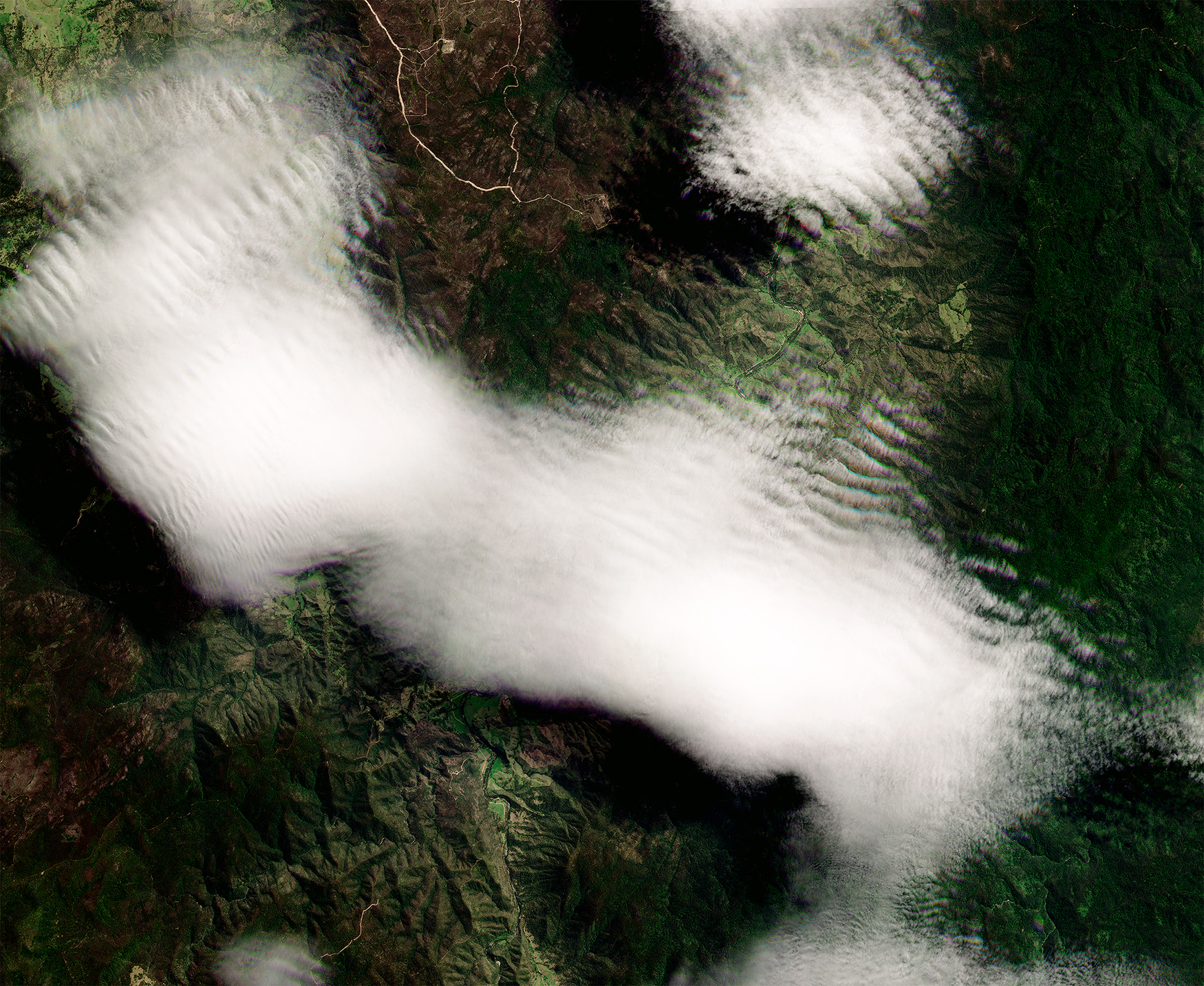 |
PlanetScope • Ewingar State Forest, Australia • October 29, 2022 |
If you ask a meteorologist how clouds work, make sure your schedule is cleared for the day. The answer is long and complicated, but basically global circulation patterns help determine where clouds form and how they move. Plus local topography has an impact, like these cloud hats on two volcanoes (thanks to Professor Simon Carn for spotting the one on Kao). |
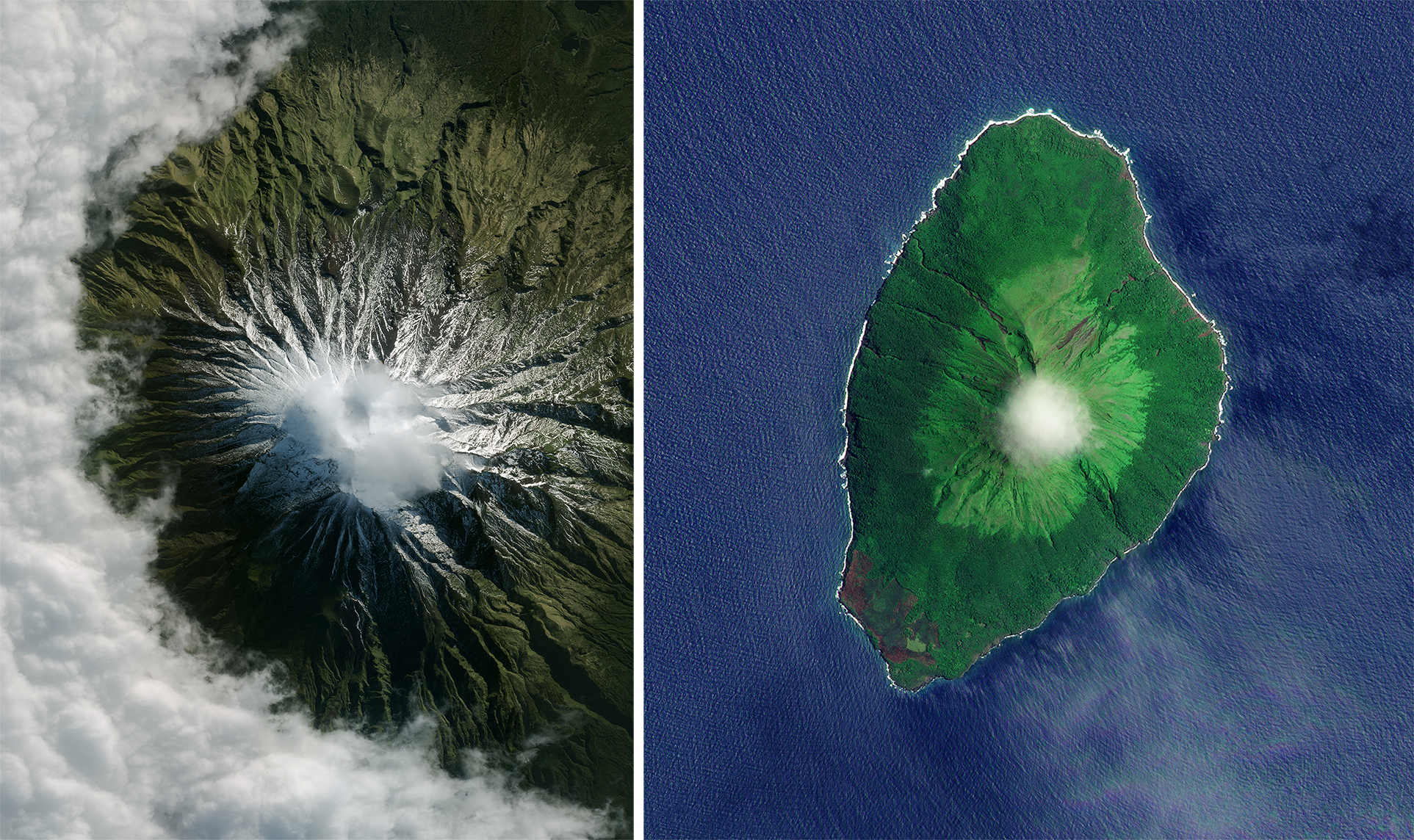 |
Left: SkySat • Tristan da Kunha, Saint Helena, UK • July 19, 2022 |
Right: PlanetScope • Kao, Tonga • October 14, 2022 |
If you weren’t shocked by two-thirds of Earth being covered in clouds, then consider this: there’s more water floating above the world’s biggest river than through it. Trees in the Amazon rainforest turn 20 billion tons of water into steam every day, while the Amazon River releases 17 billion tons into the Atlantic. Talk about cloudy with a chance of humidity. |
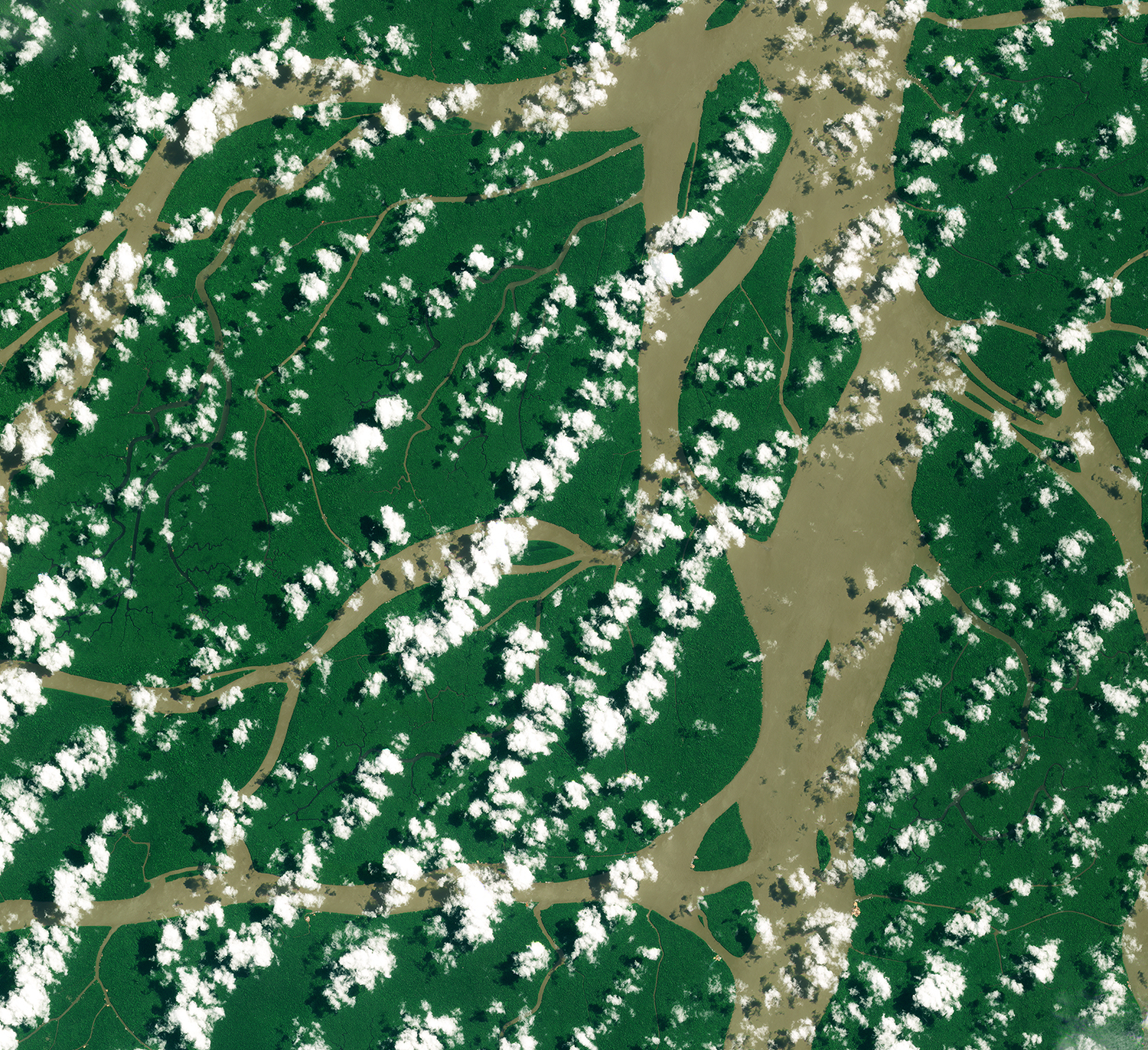 |
|
PlanetScope • Pará, Amazon Rainforest, Brazil • August 11, 2022 |
We’re no stranger to cloud cover here at Planet’s SF headquarters. The frequent bouts of low-lying clouds (fog) give our home city character and benefit local ecology. Plus clouds make for some of our favorite images across the world. So we don’t want to see them gone, even if they occasionally get in the way. |
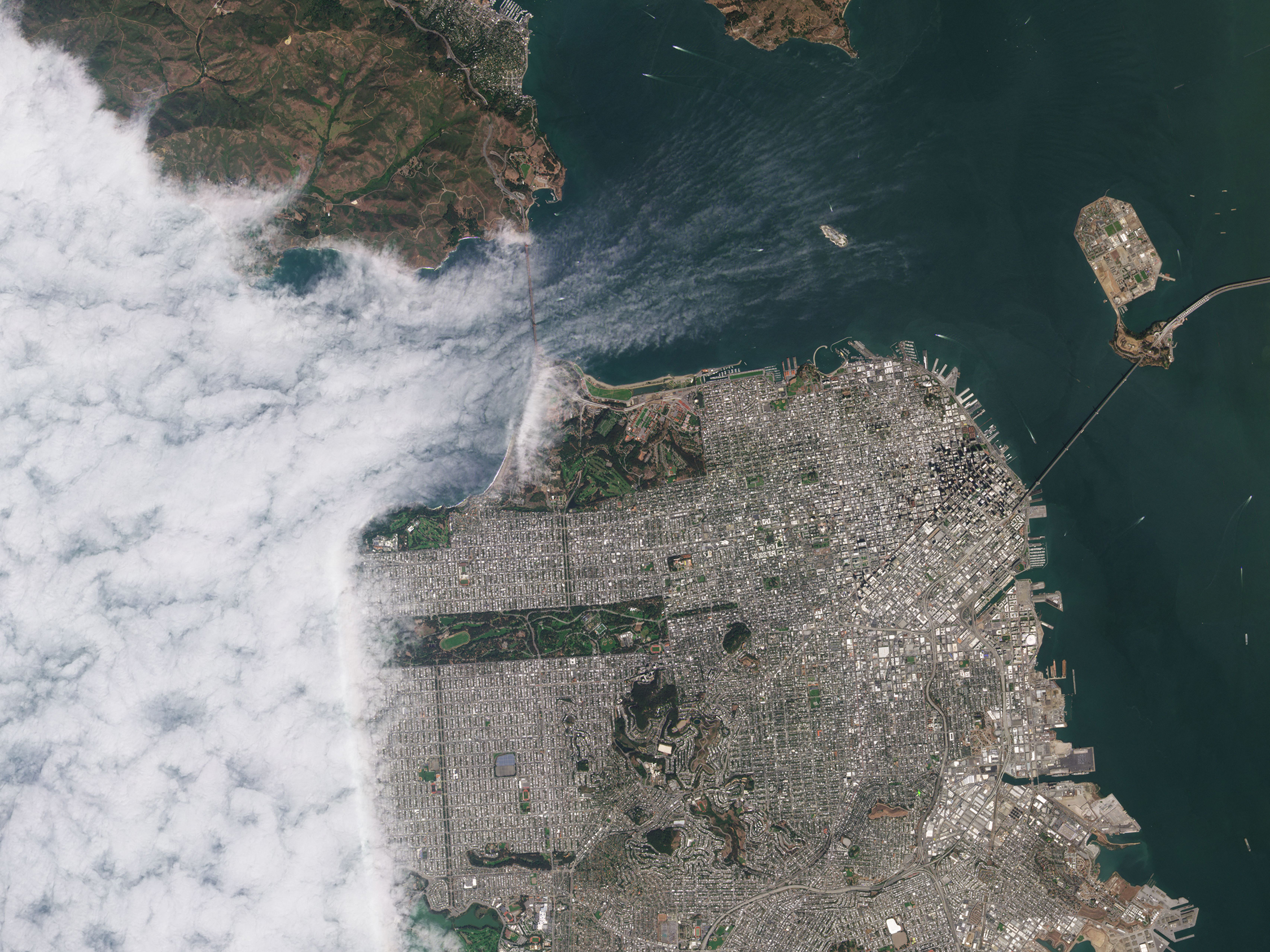 |
PlanetScope • San Francisco, CA, USA • September 11, 2019 |
Bonus: Not all clouds are photobombers. Some are the star of the shot. Here’s morning fog flowing through the steep fjords of southern Chile. |
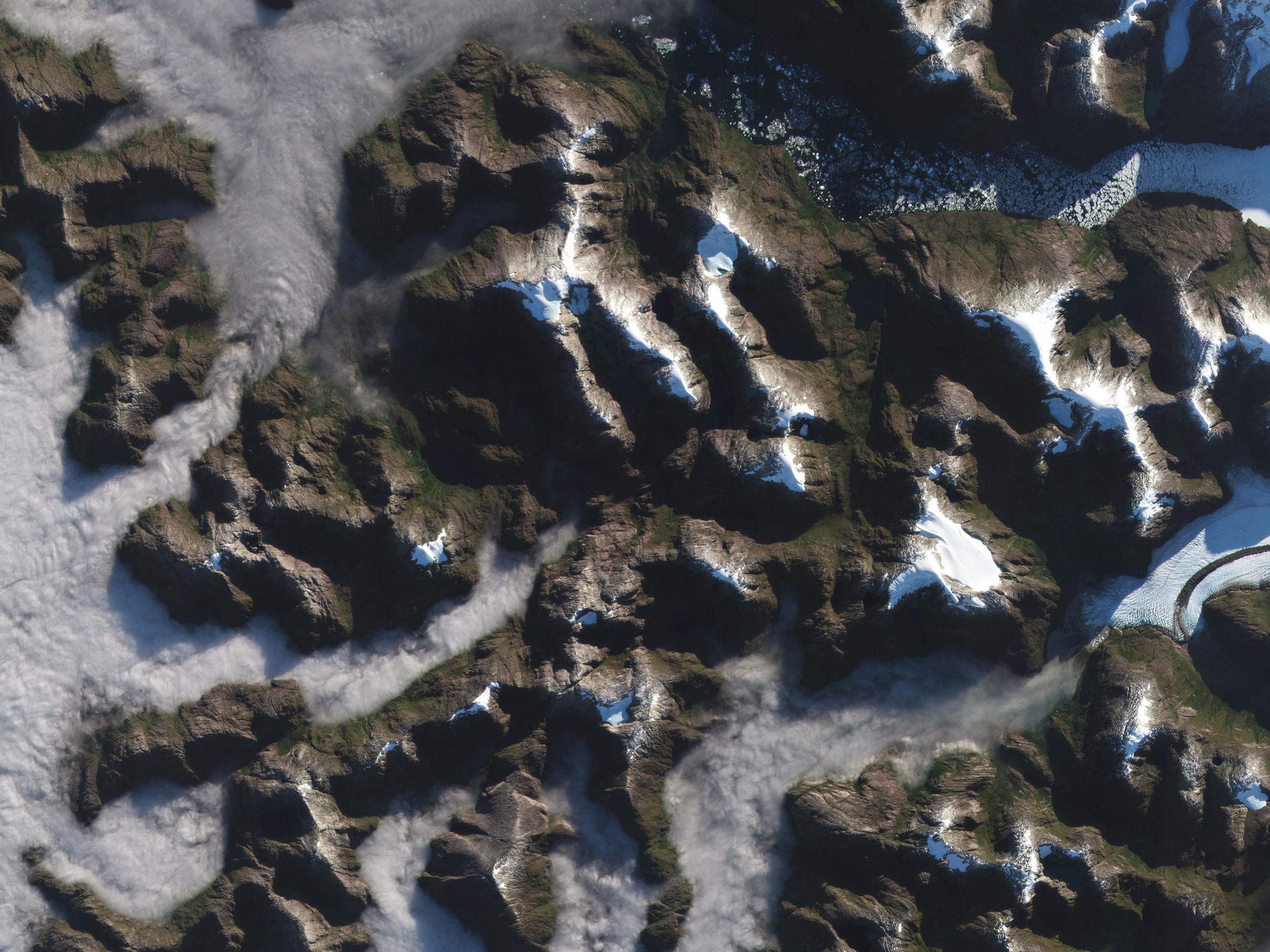 |
PlanetScope • Parque Nacional Bernardo O’Higgins, Chile • April 28, 2020 |
|
|
|
|
|
|
|
|
Satellite ExplainerShadows
Notice anything strange about this image? Besides the four differently-colored lakes, the peak of Cerro Paine Grande is casting a huge shadow. Although shadows aren’t unheard of in satellite imagery, they’re not usually this extreme. Their length is due to a combination of factors: the height and steep topography of Cerro Paine Grande, the southerly latitude of the image, the time of year (two weeks before the Southern Hemisphere’s Spring Equinox), and the time of day (9:40 a.m.). These conditions created the long shadows cast on Lago Grey, which are so sharp you can see individual peaks along Cerro Paine Grande’s ridgeline. |
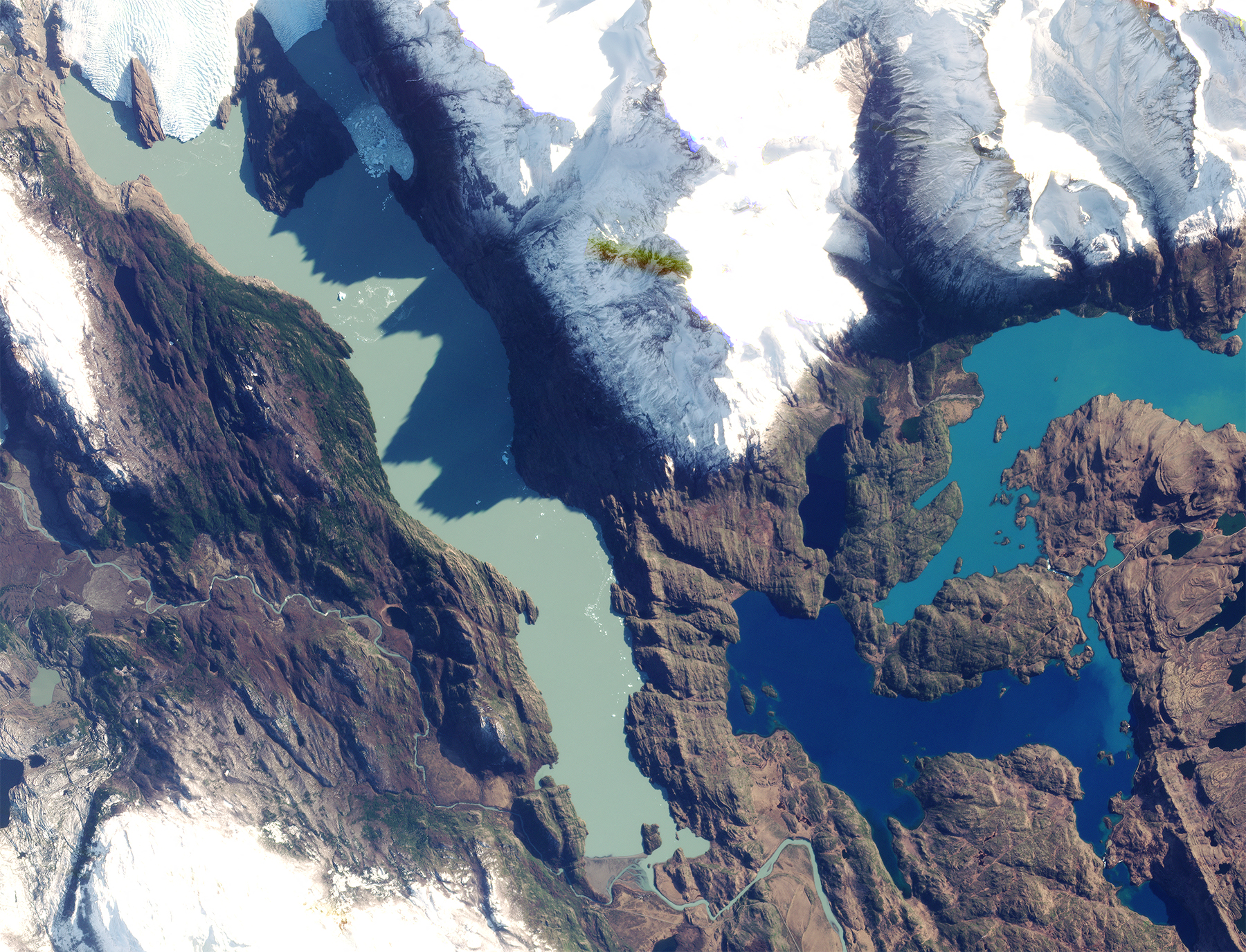 |
PlanetScope • Torres Del Paine National Park, Chile • September 7, 2022 |
|
|
|
One Year Anniversary
Snapshots turns 1 year old tomorrow. Which, if you do the math, isn’t very old. But it’s a momentous milestone for us. Whether you’re an image-browser or a die-hard reader, we appreciate all of your time and support. Your feedback has helped make Snapshots what it is today and we’re eager for even more input. What’s working? What’s not? What would you like to see more of? We’ve got an exciting year ahead and we want you to be actively a part of it, so reach out at [email protected] and let us know. Thank you for reading, learning alongside us, and being a part of the Snapshots community!
And if you’re new to the newsletter or in the mood to revisit some golden oldies, here are our favorite issues of the year:
|
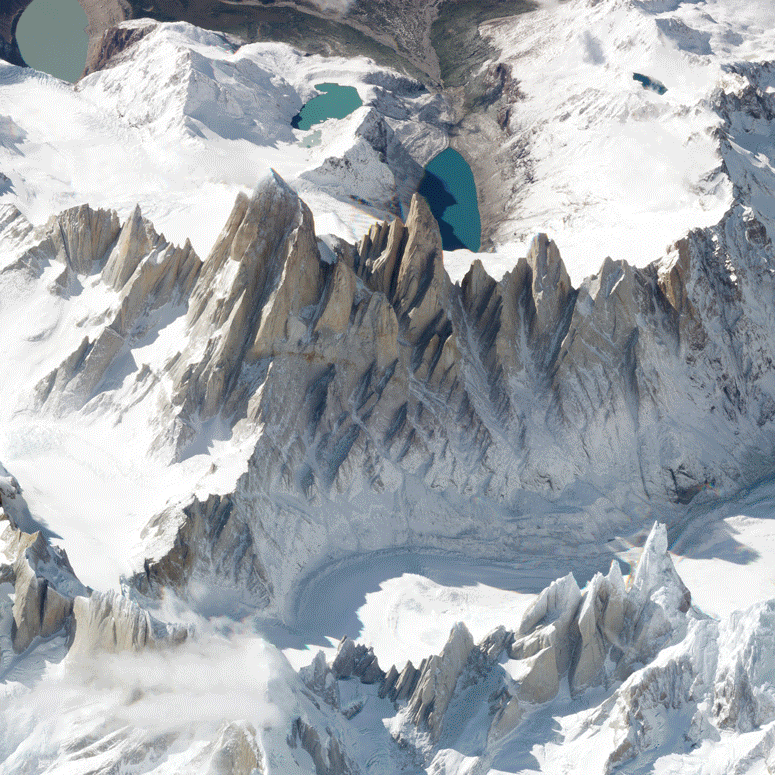 |
Planet Images |
|
|
|
|
|
Weekly Revisit
Last week we creeped around the globe to some spooky locations, from Halloween’s origins at the Irish entrance to hell to the potentially paranormal Stanley Hotel. Read it here, if you dare, and check out the whole archive for more.
|
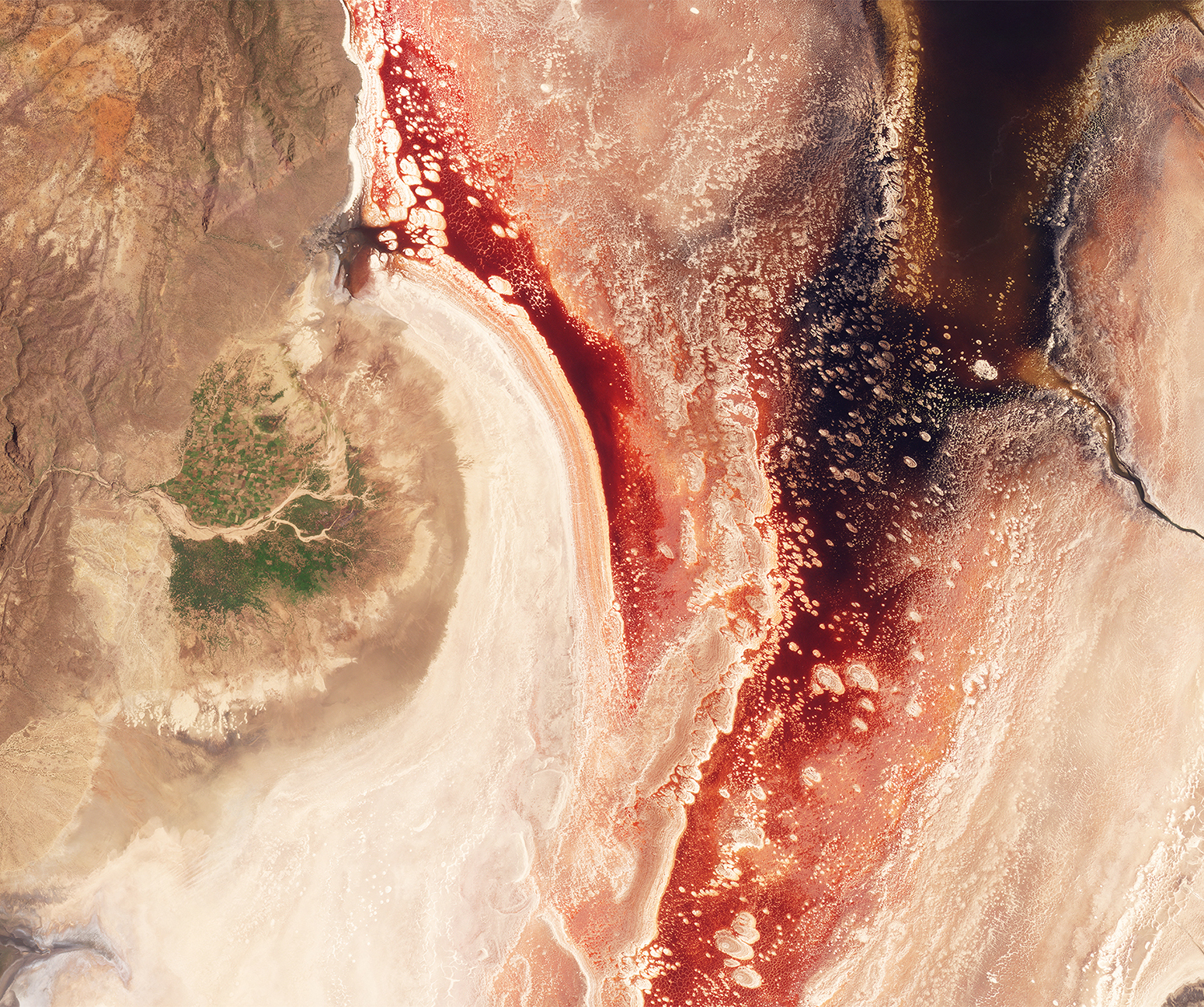 |
PlanetScope • Lake Natron, Tanzania/Kenya • October 22, 2022 |
|
|
|
|